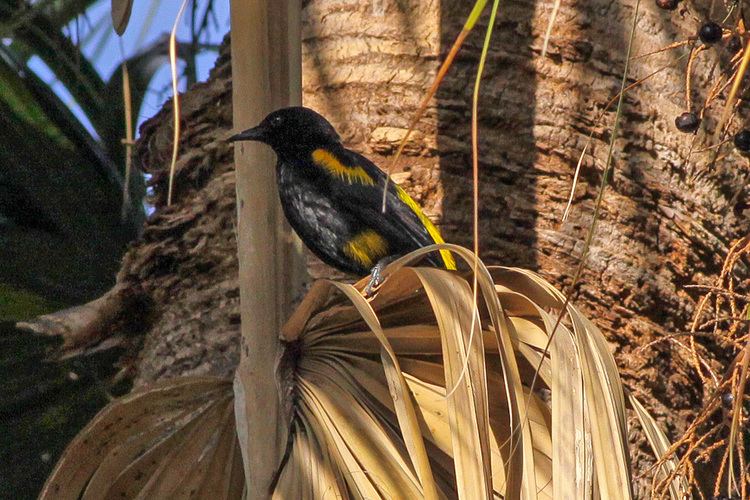Order Passeriformes Genus Icterus Higher classification New World oriole | Phylum Chordata Scientific name Icterus dominicensis Rank Species | |
 | ||
Similar | ||
The Hispaniolan oriole (Icterus dominicensis) is a species of bird in the family Icteridae. It is endemic to Hispaniola.
The taxon was formerly lumped with the Cuban oriole (Icterus melanopsis), Bahama oriole (Icterus northropi), and Puerto Rican oriole (Icterus portoricensis) into a single species until all four were elevated to full species in 2010.
Its natural habitats are subtropical or tropical dry forests, subtropical or tropical moist lowland forests, subtropical or tropical mangrove forests, and plantations.
Similar to other tropical orioles, the males and females appear alike in color The Hispaniolan oriole does not show as much yellow as the Bahama oriole (Icterus northropi), but it does show the most yellow out of the other Greater Antillean orioles including the Cuban oriole (Icterus melanopsis) and the Puerto Rican oriole (Icterus portoricensis) The shoulders, thighs, and bottoms of adult orioles are yellow while the rest of the oriole is black. On average, the Hispaniolan oriole is about 20-22 cm long. Males also on average weigh 35-38 g which is slightly more than the females who on average weigh 33-40g.
The Hispaniolan oriole's breeding season lasts March through June. The clutch usually contains 3-4 eggs that are white or pale blue with red-brown spots.
Their call is a sharp kt or check sound and their song, which can only be heard after dawn, is a sequence of high-pitched whistles.
Hispaniolan orioles feed on fruit, insects, and nectar.
The Shiny cowbird (Molothrus bonariensis) is a brood parasite of the oriole.
The population could suffer decline from brood parasitism and habitat loss, but currently, it is listed as "Least Concern" on IUCN Red List.
